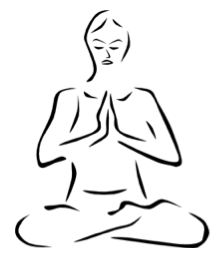 The West’s traditional method of treating depression involves psychotherapy and medication, but with the rising popularity of yoga across the world, it’s become more difficult to ignore yoga practitioners’ claims of uplifted moods and eased ailments. Scientific research on the benefits of yoga for those suffering from depression remains sparse and generally comes attached with a cautionary warning that the findings may be unreliable.
The West’s traditional method of treating depression involves psychotherapy and medication, but with the rising popularity of yoga across the world, it’s become more difficult to ignore yoga practitioners’ claims of uplifted moods and eased ailments. Scientific research on the benefits of yoga for those suffering from depression remains sparse and generally comes attached with a cautionary warning that the findings may be unreliable.
Yoga and the Scientific Community
Have a heart-to-heart with any devoted yogi—not just someone who’s in it for the cute pants or the weight loss—and you will hear a train of praises for the physical and psycho-emotional benefits of the art. In fact, in 2004, the University of California, LA, conducted an experiment that involved 28 mildly depressed young adults on campus who participated in two hour-long sessions of Iyengar yoga weekly for 5 consecutive weeks. “Subjects who participated,” reports the abstract, “demonstrated significant decreases in self-reported symptoms of depression and trait anxiety. . . . Changes were also observed in acute mood, with subjects reporting decreased levels of negative mood and fatigue following yoga classes.” (See the abstract of the study here: http://www.ncbi.nlm.nih.gov/pubmed/15055096?dopt=Citation.) The study was typical in its findings as well as its call for greater level of scrutiny, which remains underway today.
Yoga and Your Body
On a (mostly) physical level, regular practice of yoga can alleviate depression by reducing the physiological manifestations of stress. This means easing cramped shoulders, stretching tight hips, and triggering the release of endorphins—the happy hormone. Even slower and less physically strenuous versions of yoga (such as Iyengar and Anusara) can help the body release toxins by providing deep muscle and organ movements as well as strength and flexibility. Individuals suffering from low self-esteem or feelings of weakness (such as after the loss of a loved one) can benefit from feeling powerful through yoga, which tones muscles and encourages deep breathing. Sun salutations, shoulder stand, and the warrior poses are particularly powerful, ego-boosting poses that involve upward motions and stretching or wide stances and feelings of grounding.
Yoga and Your Mind
Yoga has psychological, emotional, and—for some—spiritual effects, too. Yoga often entails meditation, which encourages shedding of stress and earthly concerns in favor of intense awareness of things beyond the self, often provoking a feeling of universality and nothingness at once. Practitioners of course experience varying sensations and bring different philosophies to yoga and meditation, but mindfulness, being in the present, and loving kindness to oneself as well as others are key points in both practices.
Yoga as a Tool to Heal from Depression
This is not to say that severe depression or chemical conditions such as bipolarity can be utterly solved through yoga—many cases still require professional aid. Mayo Clinic and other institutions now admit, however, that yoga may be a complementary method of treating depression.
Yoga holds a few advantages over traditional methods of treating anxiety and depression.
- Personal practice is free, and even lessons and books cost less compared to medication or therapy
- No need to depend on someone else’s schedule; a yoga practitioner may heal whenever he or she wishes.
- Healing without medication and through the power of the self may provide increased self-esteem.
Make sure to join a class or study yoga and its safe execution before attempting its regular practice. (Improper training can result in physical injuries, however slow the style of yoga.) If you suspect you suffer from severe depression, do not attempt to self-treat. Remember that yoga is not a cure-all but simply a helpful, soothing, and invigorating tool to get you back on your feet.
Bio: Maria Rainier is a freelance writer and blog junkie. She is currently a resident blogger at First in Education where recently she’s been researching the highest paying associate degrees versus the lowest paying associate degrees. In her spare time, she enjoys square-foot gardening, swimming, and avoiding her laptop.
———————————————————————————————————
I look forward to your thoughts and comments!
Be sure to Subscribe to this blog either by RSS or Email via the forms on the top right column of the page.
